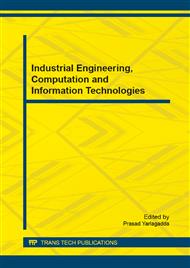p.141
p.145
p.150
p.154
p.160
p.167
p.172
p.180
p.189
A New Multiple UAVs Cooperative Search Model Building and Route Planning Method
Abstract:
In multiple UAVs cooperative search tasks, the traditional environment model was based on squares, which caused the problem of different cost in each UAV’s single step. Therefore, we divide the battlefield by regular hexagons to make the UAVs’ steps more coordinate. At the same time, the cell’s encoding method was improved, which can greatly reduce the computing complexity of the coordinates. Route planning is an important part in cooperative search to decide where to go and how to search. By analyzing the method of route planning with several steps, Model Predictive Control (MPC) was proved to be an easy and effective method. However it became a complex probem to selecte a best route from so big amount of planning routes. Then the method of Discrete Particle Swarm Optimal (DPSO) was proposed to solve this problem. In order to evaluate the value of the route, an evaluate function was designed, containing the reward function of the route, the repulsion function of the no-fly zone and the force function of other UAVs. The reward function was designed based on the targets’ existence probabilities and the areas’ information uncertainty values. Then the no-fly zone was designed based on the artificial potential field method. However, due to each UAV can fly in different height, that is, collision would not happen, so the force function of other UAVs didn’t need concerned. In the end, a simulation experiment with some static targets and a no-fly zone was carried out, in which, a greed method was put forward to be a comparison to MPC. The results showed that the methodology proposed can ensure that the UAVs detected the targets safely and covered as more area as possible.
Info:
Periodical:
Pages:
160-166
Citation:
Online since:
December 2014
Authors:
Price:
Сopyright:
© 2015 Trans Tech Publications Ltd. All Rights Reserved
Share:
Citation:


